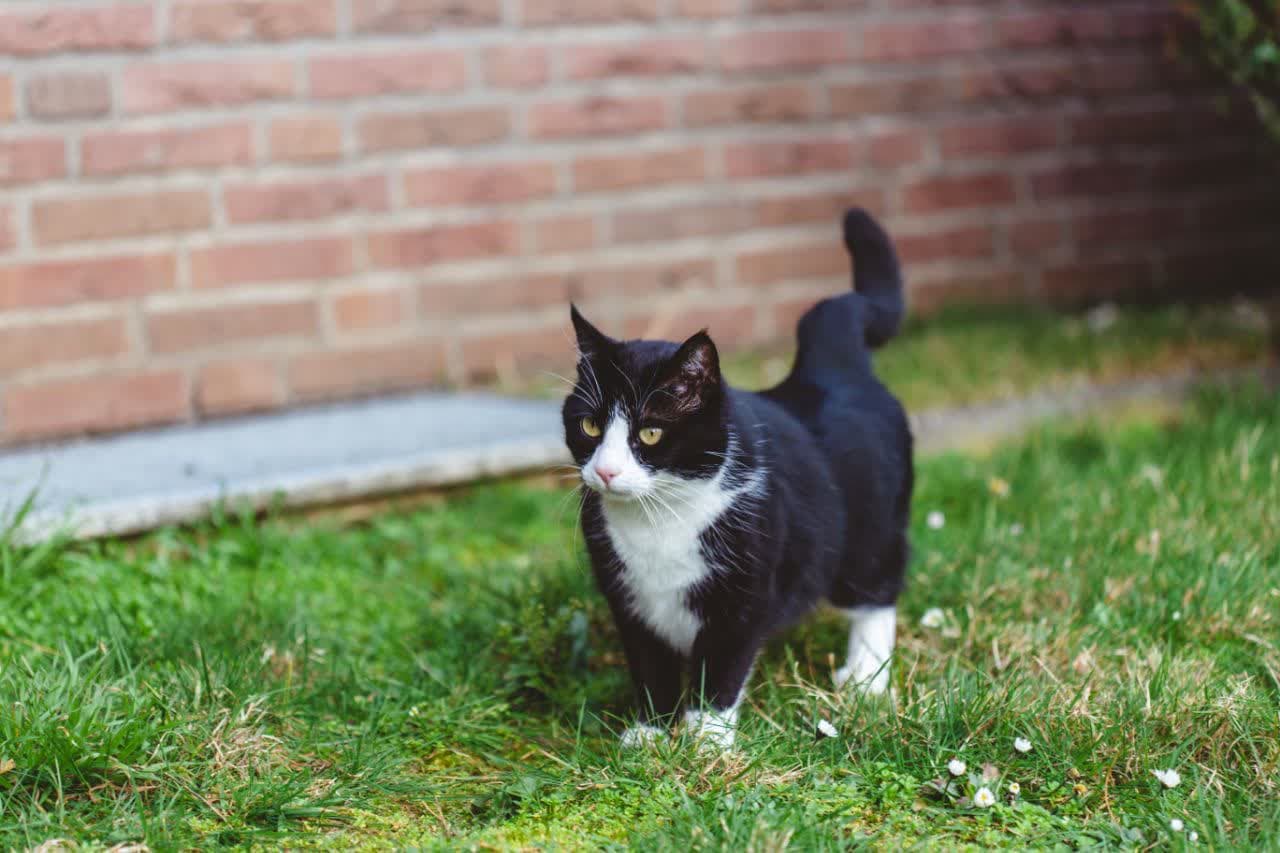In the enchanting world of feline companions, there exists a breed that stands out from the crowd, captivating the hearts of cat enthusiasts around the globe. The Munchkin cat, with its endearing short legs and playful personality, is a unique feline companion that has been making its mark on the internet and in households everywhere. In this comprehensive guide, we will delve into the enchanting world of Munchkin cats, exploring their origins, distinct characteristics, care requirements, and the controversy surrounding this remarkable breed.
Table of Contents
The Munchkin’s Mysterious Origins
Munchkin cats’ origin can be traced back to the United States in the early 1990s. The breed’s defining feature is its naturally occurring genetic mutation that leads to shorter legs. While similar mutations had been observed in cats throughout history, it wasn’t until the 20th century that the Munchkin breed was deliberately developed.
The name “Munchkin” was inspired by the diminutive characters in L. Frank Baum’s “The Wizard of Oz,” reflecting the breed’s short stature. Munchkins come in a variety of coat colors and patterns, and their distinct appearance quickly gained popularity among cat enthusiasts.
Although the breed faced initial concerns about the potential health issues associated with short legs, responsible breeding practices have helped to minimize such risks. Today, Munchkin cats are recognized by cat breed organizations, and they continue to be cherished for their unique and adorable features.
The Controversy Surrounding Munchkin Cats
Munchkin cats are undoubtedly captivating, but they’ve also been the subject of controversy. Critics argue that their short legs may lead to health issues, including back problems. However, extensive research and studies have shown that Munchkins can lead healthy lives, with minimal risk of spinal complications. It’s essential for potential owners to be well-informed about the breed and consult reputable breeders to ensure the well-being of their feline friend.
Understanding Munchkin Characteristics
The Munchkin cat’s uniqueness goes beyond its short legs. Let’s explore some of their most captivating characteristics:
1. Playful and Energetic
Munchkin cats are known for their playful and energetic nature. Their short legs don’t hinder their ability to run, jump, and chase toys. They are a bundle of joy, bringing endless entertainment to their households.

2. Social Butterflies
In terms of their nature, Munchkin cats are social and affectionate by disposition. They often crave human interaction and enjoy being part of the family. Their playful and energetic nature makes them engaging companions, and they tend to get along well with other pets in the household. Munchkins are also known for their curiosity, and they may explore every nook and cranny in your home. This adventurous spirit adds to their charm, making them a delightful addition to any household.
3. Diverse Coat Patterns
Munchkins come in various coat patterns and colors, making them a visual delight. From calico to tabby and everything in between, there’s a Munchkin to suit every aesthetic preference.
4. Cleanliness
Munchkin cats are known for their innate cleanliness and grooming habits. These felines take pride in keeping their fur immaculate and are often seen licking themselves to maintain hygiene. While their shorter legs might give them a unique appearance, they have no trouble accessing the litter box or self-grooming. Regular brushing can help keep their coats in top condition and reduce shedding. Many Munchkin cat owners appreciate their pet’s cleanliness, which also makes them a great choice for individuals looking for a low-maintenance feline companion.
5. Adaptability
Munchkin cats are adaptable and can comfortably thrive in various living environments. Whether you reside in a cozy apartment or a spacious house, a Munchkin will find a way to make itself at home.
Breeding
Breeding Munchkin cats requires careful consideration and responsible practices. It’s crucial to understand the genetics behind the breed to prevent potential health issues. Munchkin cats inherit their unique short legs through a genetic mutation, and breeding two Munchkins together can result in a higher likelihood of certain skeletal problems. To maintain the health of the breed, it’s advisable to breed a Munchkin with a standard-legged cat to reduce the chances of producing kittens with severe skeletal issues. Responsible breeders prioritize the well-being of the cats and aim to produce healthy, happy Munchkin kittens.
When considering breeding Munchkin cats, there are essential requirements to meet. First, ensure that both the male and female cats are in excellent health and free from hereditary diseases. Conduct thorough health screenings to identify and address any potential issues. A safe and comfortable environment for the pregnant cat and her kittens is vital. Provide proper nutrition and regular veterinary care during the pregnancy and the kitten-rearing period. Responsible breeders also adhere to ethical breeding practices, never overbreeding their cats, and ensuring that all kittens find loving, responsible homes.
To become a Munchkin cat breeder, it’s crucial to join reputable breed organizations, engage in continuing education on cat genetics, and have a deep commitment to the welfare of the breed. The goal should always be to preserve the health and unique qualities of Munchkin cats while promoting responsible breeding practices. With the right knowledge, care, and dedication, breeding Munchkin cats can be a rewarding experience for both the breeder and the fortunate families who welcome these charming felines into their homes.
Caring for Your Munchkin
To ensure the health and happiness of your Munchkin cat, consider the following essential care guidelines:
1. Balanced Diet
Ensuring a balanced diet for Munchkin cats is essential for their health and well-being. These charming felines may have shorter legs, but their dietary needs are similar to other cat breeds. Start by choosing high-quality cat food with a primary protein source as its main ingredient. Look for options with at least 30-40% protein content to support your Munchkin’s lean muscle mass. Additionally, maintain a moderate fat content of around 15-20% and keep carbohydrates to a minimum, ideally less than 10%, as cats are obligate carnivores. Portion control is crucial, given their tendency to gain weight, so follow the recommended feeding guidelines on the cat food packaging and consult your vet for specific recommendations.
To ensure your Munchkin cat’s vitality, always provide fresh, clean water for them to stay hydrated. Resist the temptation to share human food, as many items can be toxic to cats. Establish a regular feeding schedule to maintain a healthy weight and support proper digestion. Every cat is unique, and their dietary requirements can vary, so it’s essential to consult your veterinarian for personalized guidance on the best diet for your specific Munchkin cat.
In conclusion, the key to a Munchkin cat’s well-being lies in providing them with a nutritionally balanced diet. By selecting the right cat food, monitoring portion sizes, and consulting with your veterinarian, you can help your Munchkin cat lead a healthy and happy life, despite their shorter legs. Prioritizing their dietary needs is a fundamental aspect of ensuring their overall health and longevity.
2. Regular Exercise
Engage your Munchkin in daily play and exercise to keep them fit and mentally stimulated. Interactive toys and play sessions will be your best allies.
3. Routine Veterinary Care
Regular vet check-ups are essential to monitor your cat’s health and address any potential issues promptly. Vaccinations, parasite control, and dental care are crucial aspects of their well-being.

4. Grooming
Munchkin cats have different coat lengths, but all require regular grooming to prevent matting and shedding. Brush your Munchkin’s coat a few times a week to keep it in pristine condition.
5. Potty Training
Potty training Munchkin cats is typically a straightforward process. Like most cats, they have a natural inclination to use a litter box. It’s essential to provide a clean, accessible litter box in a quiet, low-traffic area of your home. Regularly scoop and clean the box to maintain their hygiene standards. If you’re introducing a Munchkin kitten to litter training, it’s advisable to use a litter that is low-dust, non-clumping, and gentle on their sensitive paws. Munchkins are known for their intelligence, and with patience and consistency, they quickly adapt to using the litter box. If you encounter any issues with potty training, consult your veterinarian for guidance and rule out any underlying health concerns.
The Munchkin Cat Community
Munchkin cat enthusiasts have established a vibrant and welcoming community. Online forums, social media groups, and local breed clubs offer a space for Munchkin lovers to share stories, seek advice, and celebrate their unique companions.
Conclusion
In conclusion, Munchkin cats are a captivating and extraordinary breed that have captured the hearts of many. Despite initial controversies, these felines have shown that they can lead happy, healthy lives. Their playful nature, unique appearance, and adaptability make them a delightful addition to any household. When properly cared for, a Munchkin cat can become a cherished member of your family, bringing joy and love to your life. So, if you’re looking for a feline companion that’s anything but ordinary, consider welcoming a Munchkin into your home.

